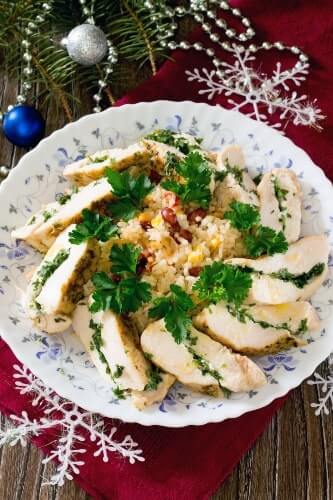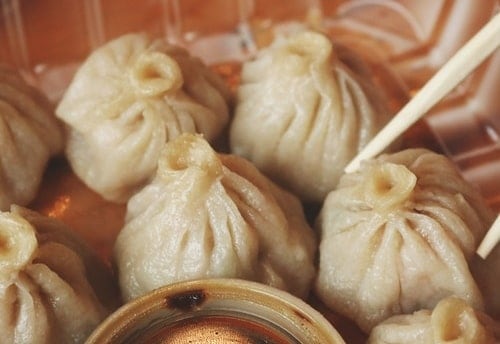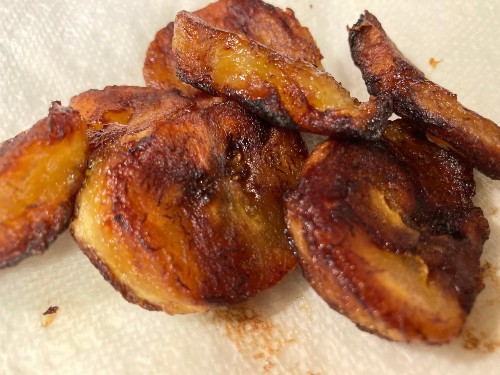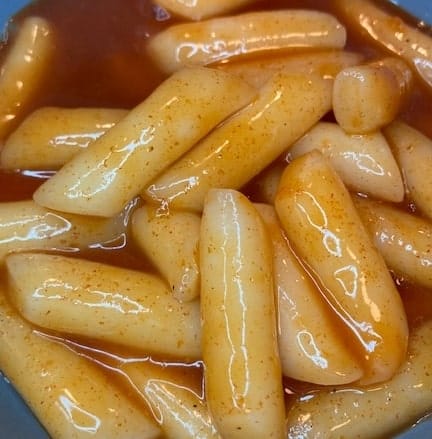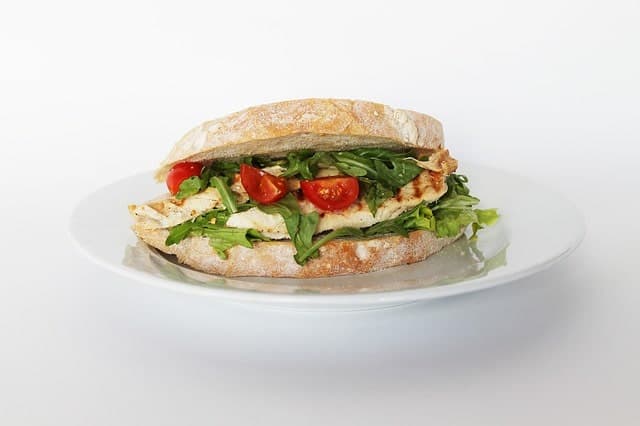31 Food with Different Names in Different Countries (Spanish)
Many people do not know that food can be said with different names in different countries (Spanish-speaking countries, specifically).
Growing up in Southern California, and even now sometimes, I would often get confused between the Costa Rican words I learned growing up and the Mexican words I would often hear from my Mexican friends.
I’ve learned a lot, however, throughout the years. I’ve compiled a list of common words that can often be confusing if you are speaking with someone from a different Spanish-speaking country. But first, how I first learned about the differences in the Spanish languages.
[There may be affiliate links in this post. Read my disclosure policy to learn more]
Cake in Spanish is Queque
Although I was born in Costa Rica, I grew up in the United States and my primary language is English. I grew up speaking English, but my mom made sure to teach us Spanish and to put us in environments where we would use Spanish so that we could communicate with our family in Costa Rica.
In fact, my mom enrolled my siblings and me in a bilingual school when I was in first grade. We were living in Oregon at the time and back then there weren’t too many Latinos living around our area.
I felt proud to know a little bit more Spanish than my classmates. I always knew what to say in Spanish and how to say it (well… almost always).
However, the Bible does say that pride comes before the fall, right? Yea… I fell.
My Spanish teacher asked the class one day how to say “cake” in Spanish. I confidently rose my hand and said “queque”. My teacher looked at me and said, “Noooo, Melissa. That’s not correct. Does anyone else know”?
I was so confused. I was sooo sure that’s how to say cake in Spanish! I’ve used that word so many times.
Do you know what the “correct” answer was?
Pastel.
I thought to myself… what the…?
Right as I got off the bus at the end of the day to go back home I ran to my mom and told her about how the teacher was wrong today because she told me that cake in Spanish is pastel and not queque.
My mom laughed.
She told me queque is how you say cake in Costa Rican Spanish, but other Spanish-speaking countries use different words for the same thing.
I thought queque was Spanish for cake. I know how to speak Spanish. What is this madness?
So, that’s how I learned that there are other words for cake in Spanish. I was so confused.
To make matters worse, a while later I learned that other Spanish-speaking countries don’t say confite for candy.
I was such a confused little kid.
About the Spanish Language
Spanish is considered a romance language. The romance languages are those which originated in Latin. They include Spanish, Italian, Portuguese, French, Romanian, and Catalan. This is why these languages all sound very similar.
There are currently 559 million people worldwide who speak Spanish. Of those 559 million, 460 million are native Spanish speakers (Forbes.com).
Interestingly, the second-largest Spanish-speaking population is not located in a country where Spanish is the official or primary language. This country, believe it or not, is the United States. The country with the most amount of Spanish speakers is Mexico.
Spanish is the official language of the following countries:
- Argentina
- Bolivia
- Chile
- Colombia
- Costa Rica
- Cuba
- Dominican Republic
- Equador
- Equatorial Guinea (Africa)
- El Salvador
- Guatemala
- Honduras
- Mexico
- Nicaragua
- Panama
- Paraguay
- Peru
- Puerto Rico
- Spain
- Uruguay
- Venezuela
How the Spanish Language Spread to Other Countries
As many people know or can assume, the Spanish language originated in Spain and spread to many other countries around the world.
Before that, the Spanish language came into existence in Spain as a result of various invasions throughout time by the Visigoths in Central Europe and the Moors of Northern Africa (rosettastone.com).
These invasions influenced the Spanish language to become what it is today. These influences include Arabic, Greek, and other Native American languages.
You can see Arabic influences from the North African Moors, for example, in words like almohada (pillow) and azucar (sugar).
Almohada comes from the Arabic word al-makhada, which means the same thing. Azucar comes from the word sukkar, which means the same thing.
Eventually, in the 1600s and 1700s, after the Spanish language had become more established, Spanish explorers and conquistadores voyaged to the Americas. The Spanish language quickly spread throughout the Caribbean and North, Central, and South America.
The cultural and regional differences amongst these different Spanish-speaking countries are the reasons why some words and phrases have different meanings.
For example, the natives of the Caribbean spoke a different language from the natives of the mountainous Andes.
Below, I have provided a list of food with different names in different countries.
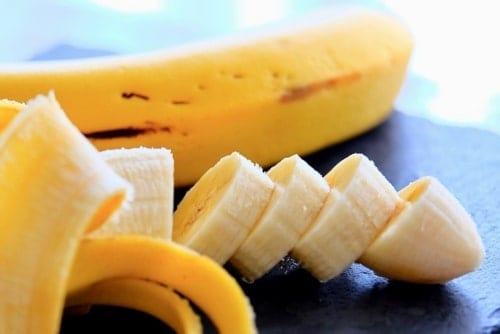
Food with Different Names in Different Countries
*These definitions were all found on spanishdict.com*
Appetizer
Entrada: Most Spanish-speaking countries
Botana: Mexico
Tapa: Spain
Avocado
Aguacate: Most Spanish-speaking countries
Palta: South America
Banana
Banano: Costa Rica
Plátano: Mexico
Banana: South America, Panama
Beans
Frijoles: Most Latin American countries
Judías: Spain
Habichuelas: Many Latin American countries, Caribbean, Andes
Caraotas: Venezuela
Alubias: Spain
Beet
Remolacha: Most Spanish-speaking countries
Betabel: Mexico
Cake
Queque: Costa Rica, Cuba, Nicaragua, Honduras
Pastel: Mexico
Torta: South America, Spain
Bizcocho: Puerto Rico, Columbia
Candy
Confite: Costa Rica
Dulce: Mexico & other Latin American Countries
Chuchería: Spain
Corn
Maíz: Many Spanish-speaking countries
Elote: Central America, Mexico
Choclo: South America
Cream
Crema: Latin America
Nata: Spain
Green Bean
Frijol verde: Many Latin American countries
Habichuela: Colombia, Panama, Spain
Chaucha: Paraguay, River Plate
Ejote: Mexico
Judía Verde: Spain
Hotdog
Perro caliente: Most Spanish-speaking countries
Pancho: River Plate
Jocho: Mexico
Ice-cream
Helado: Most Spanish-speaking countries
Mantecado: Puerto Rico
Nieve: Mexico
Juice
Jugo: Most Spanish-speaking countries
Zumo: Spain
Lemon
Limón: Most Spanish-speaking countries
Lima: Andes, Caribbean, Mexico, Panama
Lunch
Almuerzo: Most Spanish-speaking countries
Comida: Mexico, Spain
Orange
Naranja: Most Spanish-speaking countries
China: Puerto Rico, Dominican Republic
Pancake
Panqueque: Many Spanish-speaking countries
Hotcake: Mexico
Panqué: Central America, Colombia
Panqueca: Venezuela
Passion Fruit
Maracuyá: Most Spanish-speaking countries
Parchita: Dominican Republic, Venezuela
Parcha: Puerto Rico
Chinola: Dominican Republic
Peach
Durazno: Latin America
Melocotón: Panama, Puerto Rico, Spain
Peanut
Maní: Latin America
Cacahuate: Spain, Honduras, Mexico, Nicaragua
Pineapple
Piña: Most Spanish-speaking countries
Ananá: Argentina, Uruguay
Popcorn
Palomitas de maíz: Many Latin American Countries
Cabritas: Chile
Pochoclo: Argentina
Pororó: Bolivia, Paraguay, River Plate
Canguil: Ecuador
Poporopos: Guatemala
Pipocas: Bolivia
Rositas: Cuba
Cotufas: Venezuela
Popcorn: Panama, Puerto Rico
Pork
Cerdo: Many Latin American countries
Chancho: Many Latin American countries
Puerco: Mexico, Panama
Marrano: Colombia
Potato
Papa: Latin America
Patata: Spain
Snack
Bocado: Many Spanish-speaking countries
Piscolabis: Spain
Botana: Mexico
Picadera: Puerto Rico, Dominican Republic
Steak
Bistec: Many Spanish-speaking countries
Bife: Bolivia, River Plate
Straw
Sorbete: Many Spanish-speaking countries
Popote: Mexico
Pitillo: Colombia, Venezuela
Sorbeto: Puerto Rico
Absorbente: Cuba
Carrizo: Panama
Bombilla: South America
Strawberry
Fresa: Most Spanish-speaking countries
Frutilla: South America
Sweet Potato
Batata: Many Spanish-speaking countries
Camote: Andres, Central America, Mexico
Tomato
Tomate: Most Spanish-speaking countries
Jitomate: Mexico
Watermelon
Sandía: Most Spanish-speaking countries
Patilla: Venezuela, Colombia
Conclusion
So, now that you have that comprehensive list, hopefully, you won’t get so confused anymore in regards to food with different names in different Spanish-speaking countries.
Please let me know if you can think of anything else or if I can add on to anything already on this list!

